Film Frame Friday is a regular series where one of our contributors will pick a film and highlight its unique cinematic style, from cinematography to mise-en-scene, and editing. It is a great way to not only introduce someone to a new film but to bring new conversations to the table. Click here for more entries in the series.
Dario Argento’s 1977 Suspiria
Cinematography - Luciano Tovoli
Editor - Franco Fraticelli
Music - Goblin
Production Design - Giuseppe Bassan
When approaching something as visceral, stunning, and aggressive as Dario Argento’s 1977 horror film Suspiria, it is easy to get caught up in the macabre or strangeness of it all. The kills are at times over the top and absurd. The plot is razor thin, silly even, but there are so many aspects of this film that attempt and succeed in disturbing and horrifying the viewer. It is an assault through nearly every sense. Visually, Suspiria is a masterpiece, the Goblin soundtrack is some of horror’s best, certainly in the royal company of Halloween, Jaws, and Psycho. Using nearly every element of the medium, Suspiria manages to stun the viewer for a 98-minute state of delusion and catharsis. Something nearly spiritual and primal occurs in the viewing of this film, from the abstract colors, surprisingly fluid and humanoid camera, and the music which alone acts as its own kind of character. Suspiria is a hallmark of the horror genre and one that succeeds in mustering discomfort and terror from the viewer with every frame and note in the film.
The Colors
To say Suspiria is famous for its unique use of red, blue, and yellow would be an understatement. It is clear how all red and all blue frames are used, but what is peculiar is when two colors are used. Glamorous uses of color, strange and peculiar camera placements and angles aside, what stands out most is when the film goes a way that is opposite of itself. When a character is blanketed in all red, while flung against a yellow wall, or when two red bodies float in an ocean of blue light. When the frame is not all brushed in a brilliant red or a vibrant blue. When two distinct colors are present on the screen is when the audiences attention is most honed into the action on display. At these critical moments, the colors tell a story all on their own. They are another character on the screen.
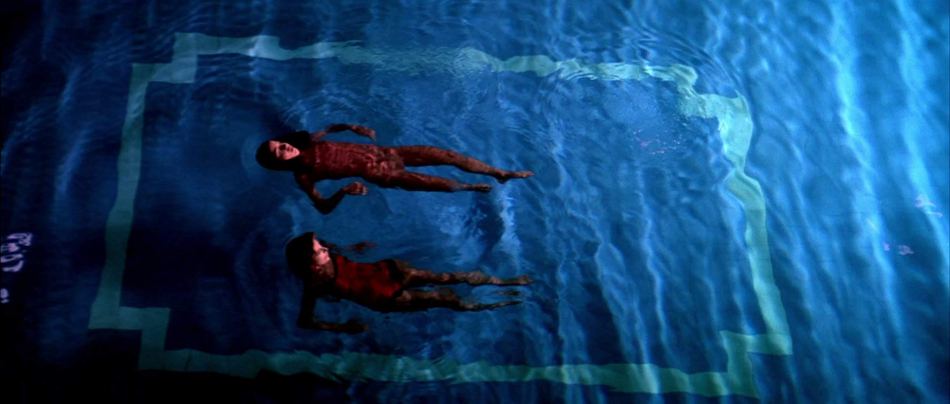
Suzy and Sara float along bathed in a subtle red among an ocean of blue. They appear to be safe, but in reality, bloody death and disaster await them around the next corner. This beautiful image uses the blue and red perfectly.
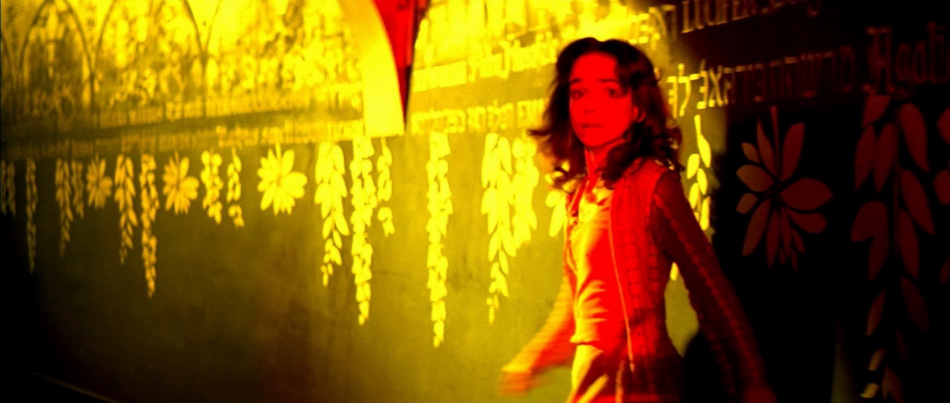
Suzy tries to flee the chaos and destruction she just caused: the blood on her hands, the red covering her body … and behind her are walls of yellow.
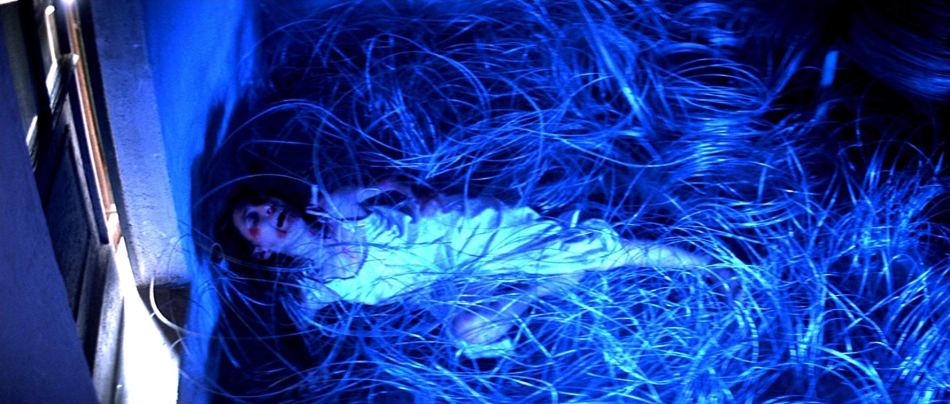
Sara consumed by the blue barbed wire, can only look at the glimmer of yellow safety and hope that lies just at the edge of the screen. It is as if the hope and safety is just close enough to be seen, but just far enough you couldn’t grasp it. The yellow crack on the door is just at the edge, just out of reach.
The First Kill
One of the most talked about sequences is the first kill sequence. This sequence is so impactful because of how jarring and strange when put all together. The kills are so grotesque and horrific, the moments feel unreal almost, existing in some different fantasy world. I know when I first saw it I was confused and jarred by the whole experience, unsure of who these people are, or why they were being killed. It is very different for a horror film to go about the kills in this way. Typically relying on an emotional connection, Argento throws that all out the window and is largely using these deaths to jar and cause a visceral gut reaction to the experience of seeing these innocent people get brutally killed.
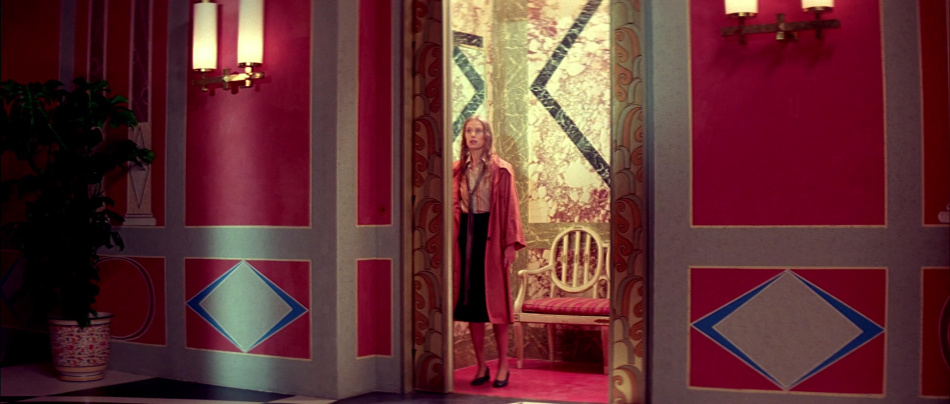
This fateful character doesn’t know the danger that followed her from the Academy. In this opening sequence, we get endless shots of red, blue, and yellow, playing an almost feverish dance together. The colors work in a chaotic, yet geometric, fashion, causing confusion. Is any of this right? Is anything happening in this natural? What I think is not a question mortals, or this lowly writer, can answer yet.

The camera and the whole set seems to stretch away from the focal point here. It is a very strange perspective and one of the more abstract in the film. We aren’t close on a character, we are far away, viewing these people from afar, creating a literal distance from them.
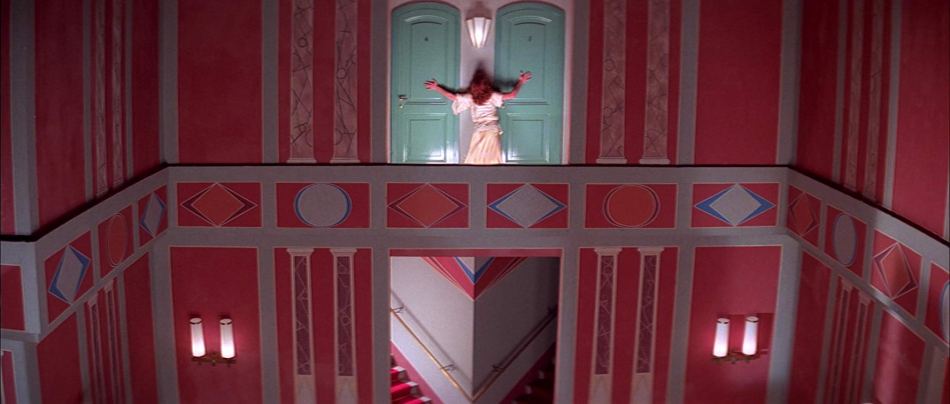
We don’t care about these characters, and we aren’t supposed to. These characters are there for the sole purpose of setting the mood for this very strange film.
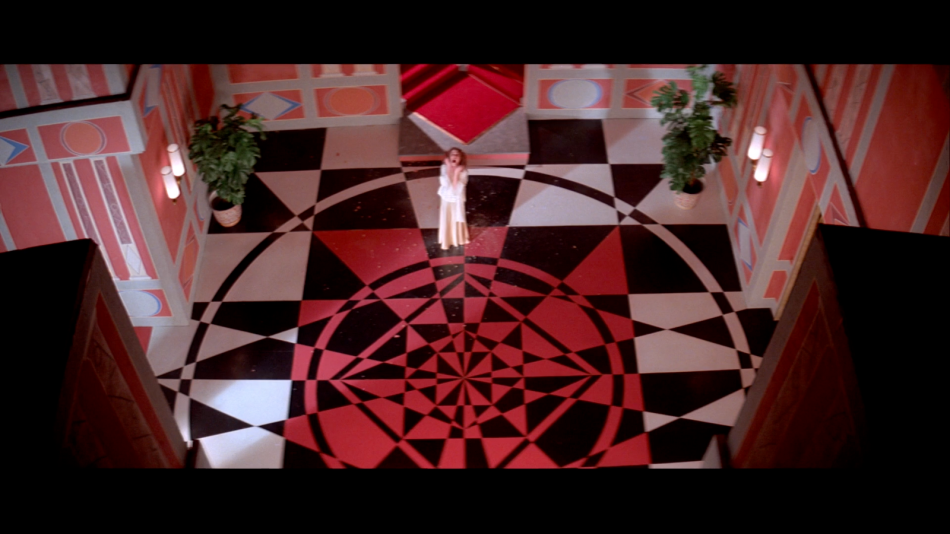
The opening set is gorgeous and grotesque, from the floors to the ceiling to the walls. Everything about this place screams danger, yet here these characters try and find safety and comfort. There will be no such thing for these women.
Suzy
Suzy, the final girl, is intriguing, because of how she interacts with the light and the world around her. Our introduction to her is walking towards loud screaming doors to the outside world, and when she leaves, she walks back into that loud and terrible world. It is an interesting character arc to say the least. I want to compare those two shots that work as a bookend of sorts for the film. It says something interesting about Suzy.
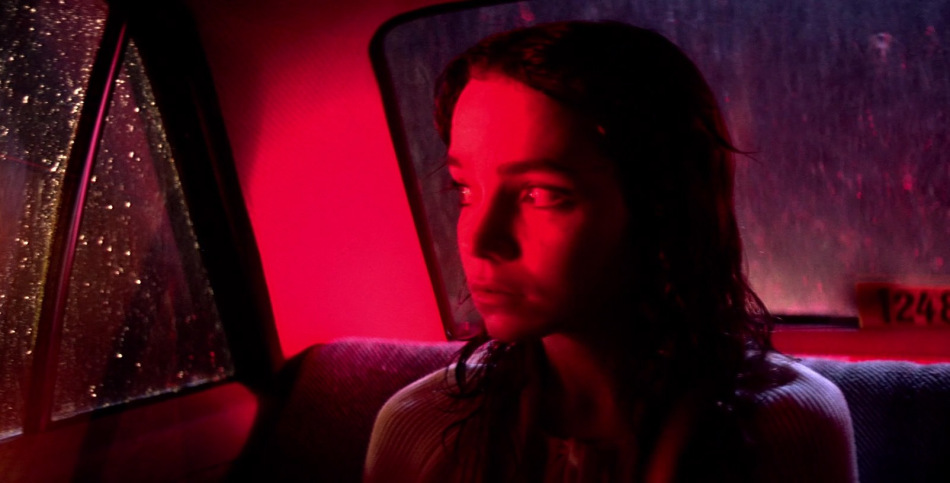
As Suzy takes the taxi to the Academy, the world outside is loud and aggressive. There is not a sense of safety for her here. On her way there, she’s confused and anxious about what awaits her. Here, Suzy looks into the rainy night in shelter and safety.
In this final shot of the film, I was left with a queasy feeling in my gut. Suzy is not okay after this traumatic incident at the Academy. As she was entering the school, she was scared and unsure, but here, as she runs from the terrible world, she can only laugh and embrace the rain. This was not a clear sign of a happy ending, but more of a telling tale of an ambiguous one. Suzy’s arc did not leave me thinking she was okay but left me wondering, “Will she ever be the same?”
I don’t find Suspiria‘s ending to be one of objective finality, I see it as being one open to interpretation. How would you be after seeing the things Suzy just saw? Could you walk away in the rain laughing it off? Further, how do we deal with trauma and the fallout of events such as what is portrayed in this film?
Leading up to Luca’s 2018 Suspiria, I am excited to see how he uses the camera, colors, and characters in a new and inventive way. Stay tuned for my review of 2018’s Suspiria later this week.

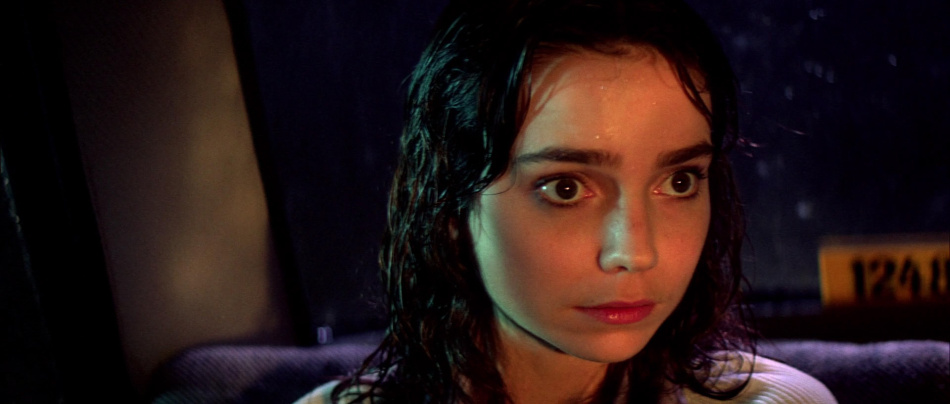
This is a fantastic movie! As you wrote, it’s visually stunning and the soundtrack is amazing. Dario Argento at his best!
LikeLike